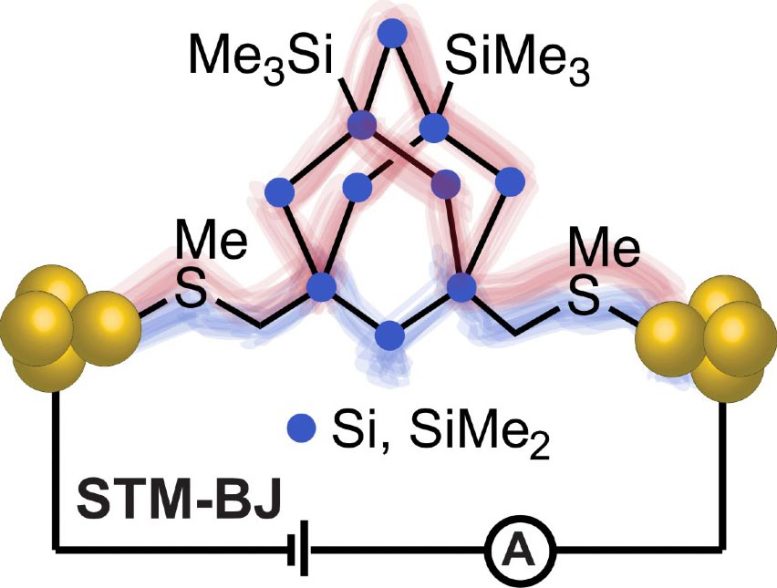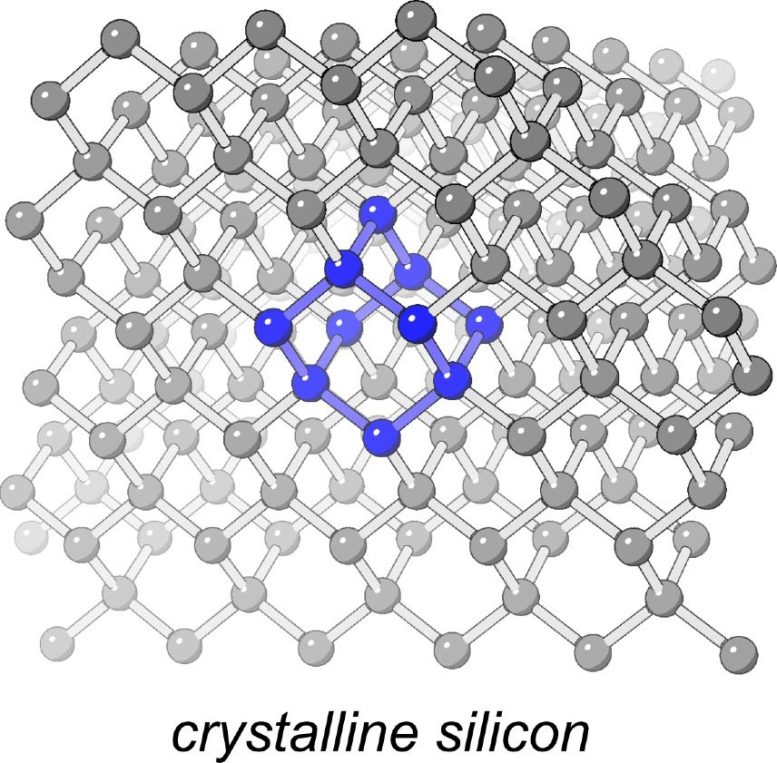
Electrons can travel through silicon as waves, paving the way for smaller and more advanced devices.
Scientists at the University of California, Riverside, have discovered a method to control how electricity moves through crystalline silicon, a key material in today’s electronic technologies. By tapping into the quantum behavior of electrons, the breakthrough could enable the development of smaller, faster, and more energy-efficient devices.
At extremely small scales, electrons act more like waves than solid particles. The researchers demonstrated that by carefully adjusting the symmetrical arrangement of atoms in silicon molecules, they could induce or prevent a process called destructive interference. This phenomenon can effectively switch electrical conductivity “on” or “off,” functioning like a nanoscale electronic switch.
Wave interference as a quantum switch
“We found that when tiny silicon structures are shaped with high symmetry, they can cancel out electron flow like noise-canceling headphones,” said Tim Su, a UCR chemistry professor who led the study. “What’s exciting is that we can control it.”
The study, published in the Journal of the American Chemical Society, offers new insight into how electrical currents behave in silicon at the atomic level.

This discovery comes at a time when the tech industry is facing challenges in further miniaturizing conventional silicon chips. Existing approaches typically involve etching microscopic circuits into silicon wafers or doping them with trace amounts of other elements to alter conductivity. While these methods have been effective for many years, they are nearing their physical boundaries: there is a limit to how small circuits can be made, and added atoms cannot resolve the complications introduced by quantum phenomena.
Building from the molecule up
In contrast, Su and his team took a chemical approach, assembling silicon molecules atom by atom instead of shaping them from larger structures. This “bottom-up” method allowed for exact control over atomic arrangement and, importantly, over how electrons travel through the silicon.
Silicon, the second most common element in Earth’s crust, is central to modern electronics. However, as technology advances and devices become smaller, quantum effects—such as electrons passing through insulating layers—create new challenges for conventional designs. The findings suggest that instead of trying to eliminate these effects, engineers could use them to their advantage.

“Our work shows how molecular symmetry in silicon leads to interference effects that control how electrons move through it,” Su said. “And we can switch that interference on or off by controlling how electrodes align with our molecule.”
Future potential for computing and energy
While the idea of using quantum interference in electronics isn’t new, this is one of the first demonstrations of the effect in three-dimensional, diamond-like silicon — the same structure used in commercial chips.
Beyond ultra-small switches, the findings could aid in the development of thermoelectric devices that convert waste heat into electricity, or even quantum computing components built from familiar materials.
“This gives us a fundamentally new way to think about switching and charge transport,” Su said. “It’s not just a tweak. It’s a rethink of what silicon can do.”
Reference: “Quantum Interference in a Molecular Analog of the Crystalline Silicon Unit Cell” by Matthew O. Hight, Ashley E. Pimentel, Timothy C. Siu, Joshua Y. Wong, Jennifer Nguyen, Veronica Carta and Timothy A. Su, 1 May 2025, Journal of the American Chemical Society.
DOI: 10.1021/jacs.5c04272
Never miss a breakthrough: Join the SciTechDaily newsletter.
1 Comment
Would make a good TAG presentation (tagaustin.org)! Please contact me if you know about a deeptech company work on such a system. Contact me at [email protected]. Thanks, Bill
“We make a living by what we get, but we make a life by what we give.”–Winston Churchill